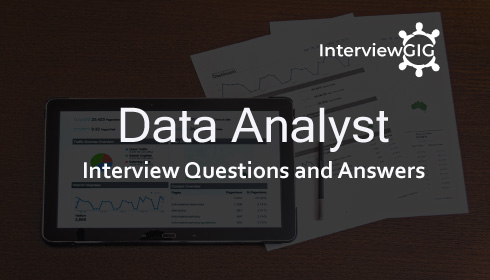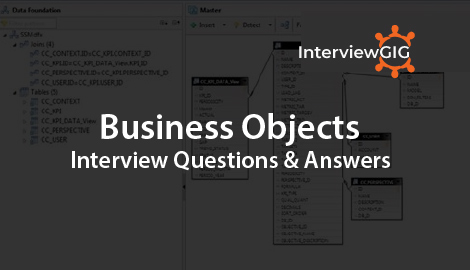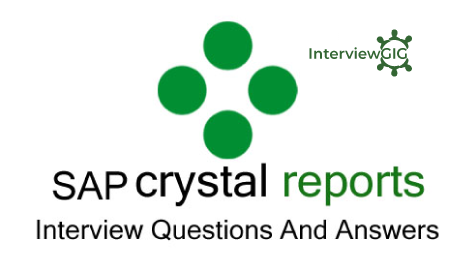What is Tableau?
Tableau is a one of the fastest growing data visualization and data analysis tool. It is a business intelligence software that allows anyone to connect to respective data, and then visualize and create interactive, shareable dashboards.
Can you list out the features of Tableau?
- Drag-and-drop functionality
- Mobile-ready dashboards
- Creating interactive dashboards and guided stories
- Advanced Visualizations
- Security permissions at any level and more.
What are the different Tableau Products and what is the latest version of Tableau?
Tableau Desktop: It is a self-service business analytics and data visualization that anyone can use. It translates pictures of data into optimized queries. With tableau desktop, you can directly connect to data from your data warehouse for live upto date data analysis. You can also perform queries without writing a single line of code. Import all your data into Tableau’s data engine from multiple sources & integrate altogether by combining multiple views in a interactive dashboard.
Tableau Server: It is more of a enterprise level Tableau software. You can publish dashboards with Tableau Desktop and share them throughout the organization with web-based Tableau server. It leverages fast databases through live connections.
Tableau Online: This is a hosted version of Tableau server which helps makes business intelligence faster and easier than before. You can publish Tableau dashboards with Tableau Desktop and share them with colleagues.
Tableau Reader: It’s a free desktop application that enables you to open and view visualizations that are built in Tableau Desktop. You can filter, drill down data but you cannot edit or perform any kind of interactions.
Tableau Public: This is a free Tableau software which you can use to make visualizations with but you need to save your workbook or worksheets in the Tableau Server which can be viewed by anyone.
What are Measures and Dimensions?
Measures are the numeric metrics or measurable quantities of the data, which can be analyzed by dimension table. Measures are stored in a table that contain foreign keys referring uniquely to the associated dimension tables. The table supports data storage at atomic level and thus, allows more number of records to be inserted at one time. For instance, a Sales table can have product key, customer key, promotion key, items sold, referring to a specific event.
Dimensions are the descriptive attribute values for multiple dimensions of each attribute, defining multiple characteristics. A dimension table, having reference of a product key form the table, can consist of product name, product type, size, color, description, etc.
What is the difference between. twb and .twbx extension?
A .twb is an xml document which contains all the selections and layout made you have made in your Tableau workbook. It does not contain any data.
A .twbx is a ‘zipped’ archive containing a .twb and any external files such as extracts and background images.
What is the difference between Tableau and Traditional BI Tools?
Tableau provides easy to use, best in class, visual analytic capabilities but has nothing to do with the data foundation or plumbing. But with an integration with a SQL server it can be the complete package.
On the other hand, traditional BI tools have the before mentioned capabilities but then you have to deal with significant amount of upfront costs. The cost of consulting, software and hardware is comparatively quite high.
What are the different connections you can make with your dataset?
We can either connect live to our data set or extract data onto Tableau.
Live: Connecting live to a data set leverages its computational processing and storage. New queries will go to the database and will be reflected as new or updated within the data.
Extract: An extract will make a static snapshot of the data to be used by Tableau’s data engine. The snapshot of the data can be refreshed on a recurring schedule as a whole or incrementally append data. One way to set up these schedules is via the Tableau server.
The benefit of Tableau extract over live connection is that extract can be used anywhere without any connection and you can build your own visualization without connecting to database.
What are sets?
Sets are custom fields that define a subset of data based on some conditions. A set can be based on a computed condition, for example, a set may contain customers with sales over a certain threshold. Computed sets update as your data changes. Alternatively, a set can be based on specific data point in your view.
What are groups?
A group is a combination of dimension members that make higher level categories. For example, if you are working with a view that shows average test scores by major, you may want to group certain majors together to create major categories.
What is a hierarchical field?
A hierarchical field in tableau is used for drilling down data. It means viewing your data in a more granular level.
What is Tableau Data Server?
Tableau server acts a middle man between Tableau users and the data. Tableau Data Server allows you to upload and share data extracts, preserve database connections, as well as reuse calculations and field metadata. This means any changes you make to the data-set, calculated fields, parameters, aliases, or definitions, can be saved and shared with others, allowing for a secure, centrally managed and standardized dataset. Additionally, you can leverage your server’s resources to run queries on extracts without having to first transfer them to your local machine.
What is Tableau Data Engine?
Tableau Data Engine is a really cool feature in Tableau. Its an analytical database designed to achieve instant query response, predictive performance, integrate seamlessly into existing data infrastructure and is not limited to load entire data sets into memory.
If you work with a large amount of data, it does takes some time to import, create indexes and sort data but after that everything speeds up. Tableau Data Engine is not really in-memory technology. The data is stored in disk after it is imported and the RAM is hardly utilized.
What are the different filters in Tableau and how are they different from each other?
The different filters in Tableau are: Quick, Context and Normal/Traditional filter are:
Normal Filter is used to restrict the data from database based on selected dimension or measure. A Traditional Filter can be created by simply dragging a field onto the ‘Filters’ shelf.
Quick filter is used to view the filtering options and filter each worksheet on a dashboard while changing the values dynamically (within the range defined) during the run time.
Context Filter is used to filter the data that is transferred to each individual worksheet. When a worksheet queries the data source, it creates a temporary, flat table that is uses to compute the chart. This temporary table includes all values that are not filtered out by either the Custom SQL or the Context Filter.
What is a dual axis?
Dual Axis is an excellent phenomenon supported by Tableau that helps users view two scales of two measures in the same graph. Many websites like Indeed.com and other make use of dual axis to show the comparison between two measures and their growth rate in a septic set of years. Dual axes let you compare multiple measures at once, having two independent axes layered on top of one another.
What is disaggregation and aggregation of data?
The process of viewing numeric values or measures at higher and more summarized levels of the data is called aggregation. When you place a measure on a shelf, Tableau automatically aggregates the data, usually by summing it. You can easily determine the aggregation applied to a field because the function always appears in front of the field’s name when it is placed on a shelf. For example, Sales becomes SUM(Sales). You can aggregate measures using Tableau only for relational data sources. Multidimensional data sources contain aggregated data only. In Tableau, multidimensional data sources are supported only in Windows.
According to Tableau, disaggregating your data allows you to view every row of the data source which can be useful when you are analyzing measures that you may want to use both independently and dependently in the view. For example, you may be analyzing the results from a product satisfaction survey with the Age of participants along one axis. You can aggregate the Age field to determine the average age of participants or disaggregate the data to determine at what age participants were most satisfied with the product.
What are Extracts and Schedules in Tableau server?
Data extracts are the first copies or subdivisions of the actual data from original data sources. The workbooks using data extracts instead of those using live DB connections are faster since the extracted data is imported in Tableau Engine.After this extraction of data, users can publish the workbook, which also publishes the extracts in Tableau Server. However, the workbook and extracts won’t refresh unless users apply a scheduled refresh on the extract. Scheduled Refreshes are the scheduling tasks set for data extract refresh so that they get refreshed automatically while publishing a workbook with data extract. This also removes the burden of republishing the workbook every time the concerned data gets updated.
How to view underlying SQL Queries in Tableau?
Viewing underlying SQL Queries in Tableau provides two options:
Create a Performance Recording to record performance information about the main events you interact with workbook. Users can view the performance metrics in a workbook created by Tableau.
Help -> Settings and Performance -> Start Performance Recording
Help -> Setting and Performance -> Stop Performance Recording.
Reviewing the Tableau Desktop Logs located at C:\Users\\My Documents\My Tableau Repository. For live connection to data source, you can check log.txt and tabprotosrv.txt files. For an extract, check tdeserver.txt file.
How to do Performance Testing in Tableau?
Performance testing is again an important part of implementing tableau. This can be done by loading Testing Tableau Server with TabJolt, which is a “Point and Run” load generator created to perform QA. While TabJolt is not supported by tableau directly, it has to be installed using other open source products.
Name the components of a Dashboard?
Horizontal – Horizontal layout containers allow the designer to group worksheets and dashboard components left to right across your page and edit the height of all elements at once.
Vertical – Vertical containers allow the user to group worksheets and dashboard components top to bottom down your page and edit the width of all elements at once.
Text – All textual fields.
Image Extract – A Tableau workbook is in XML format. In order to extracts images, Tableau applies some codes to extract an image which can be stored in XML.
Web [URL ACTION] – A URL action is a hyperlink that points to a Web page, file, or other web-based resource outside of Tableau. You can use URL actions to link to more information about your data that may be hosted outside of your data source. To make the link relevant to your data, you can substitute field values of a selection into the URL as parameters.
How to remove ‘All’ options from a Tableau auto-filter?
The auto-filter provides a feature of removing ‘All’ options by simply clicking the down arrow in the auto-filter heading. You can scroll down to ‘Customize’ in the dropdown and then uncheck the ‘Show “All” Value’ attribute. It can be activated by checking the field again.
How to add Custom Color to Tableau?
Adding a Custom Color refers to a power tool in Tableau. Restart you Tableau desktop once you save .tps file. From the Measures pane, drag the one you want to add color to Color. From the color legend menu arrow, select Edit Colors. When a dialog box opens, select the palette drop-down list and customize as per requirement.
What is TDE file?
TDE is a Tableau desktop file that contains a .tde extension. It refers to the file that contains data extracted from external sources like MS Excel, MS Access or CSV file.
There are two aspects of TDE design that make them ideal for supporting analytics and data discovery.
Firstly, TDE is a columnar store.
The second is how they are structured which impacts how they are loaded into memory and used by Tableau. This is an important aspect of how TDEs are “architecture aware”. Architecture-awareness means that TDEs use all parts of your computer memory, from RAM to hard disk, and put each part to work what best fits its characteristics.
What is Assume referential integrity?
In some cases, you can improve query performance by selecting the option to Assume Referential Integrity from the Data menu. When you use this option, Tableau will include the joined table in the query only if it is specifically referenced by fields in the view.
Explain when would you use Joins vs. Blending in Tableau?
If data resides in a single source, it is always desirable to use Joins. When your data is not in one place blending is the most viable way to create a left join like the connection between your primary and secondary data sources.
What is default Data Blending Join?
Data blending is the ability to bring data from multiple data sources into one Tableau view, without the need for any special coding. A default blend is equivalent to a left outer join. However, by switching which data source is primary, or by filtering nulls, it is possible to emulate left, right and inner joins.
What do you understand by blended axis?
In Tableau, measures can share a single axis so that all the marks are shown in a single pane. Instead of adding rows and columns to the view, when you blend measures there is a single row or column and all of the values for each measure is shown along one continuous axis. We can blend multiple measures by simply dragging one measure or axis and dropping it onto an existing axis.
What is story in Tableau?
A story is a sheet that contains a sequence of worksheets or dashboards that work together to convey information. You can create stories to show how facts are connected, provide context, demonstrate how decisions relate to outcomes, or simply make a compelling case. Each individual sheet in a story is called a story point.
Mention what are different Tableau files?
Different Tableau files include:
Workbooks: Workbooks hold one or more worksheets and dashboards
Bookmarks: It contains a single worksheet and its an easy way to quickly share your work
Packaged Workbooks: It contains a workbook along with any supporting local file data and background images
Data Extraction Files: Extract files are a local copy of a subset or entire data source
Data Connection Files: It’s a small XML file with various connection information
Design a view in a map such that if user selects any state, the cities under that state has to show profit and sales?
According to your question you must have state, city, profit and sales fields in your dataset.
Step 1: Double click on the state field
Step 2: Drag the city and drop it into Marks card.
Step 3: Drag the sales and drop it into size.
Step 4: Drag profit and drop it into color.
Step 5: Click on size legend and increase the size.
Step 6: Right click on state field and select show quick filter.
Step 7: Select any state now and check the view.
Can you list the different data types in Tableau?
- Text (string) values
- Date values
- Date & Time values
- Numerical values
- Boolean values
- Geographic values
- Cluster Group
Can you explain tableau design flow?
Design flow as follows
- Connect to Data Source: The first step is to connect the data source to Tableau.
- Build Data Views: After connecting to a data source, you need to build views, which are also known as reports.
- Enhance the Views: Views are created above, we need to be enhanced further by the use of filters, aggregations, labelling of axes, formatting of colors and borders, etc.
- Create Worksheets: Create different worksheets to create different views on the same or different data.
- Create and Organize the Dashboard: The dashboard is built by linking more than one worksheet. Hence, the action in any of the worksheet can change the result in the dashboard accordingly.
- Create a Story: sheet contains a sequence of worksheets or dashboards come together to convey information. We can create stories to show how facts are connected, provide context, demonstrate how decisions relate to outcomes, or simply make a compelling case.
What are the main filters in Tableau?
Filters are essential part of analyzing data. Tableau filters are a way of restricting the content of the data that may enter a Tableau workbook, dashboard, or view
- Extract filters
- Data source filters
- Context filters
- Filters on dimensions
- Filters on measures
- Table calculation filter
Can you explain joins in Tableau?
Joining is a method for combining data on based on the common fields. In general, there are four types of joins that we can use in Tableau: inner, left, right, and full outer.
How many tables joins are possible in Tableau?
We can join up to 32 tables
Can you explain Blending in Tableau?
Data blending is a method for combining data from multiple sources such as Oracle, DB2, Sybase, SQL Server, Excel Files and others. Data blending brings in additional information from a secondary data source and displays it with data from the primary data source directly in the view.
Can you list the difference between Data Joining and Data Blending?
- Data Joining Used when the data set is from the same source whereas Data Blending Used when the dataset is from a different data source
- Data Joining Uses different types of join (left join, right join, inner join and full outer join) where as Data Blending uses only left join
- In Data joining, Data has to be maintained at the same level of granularity when it comes for Data Blending Data can be available in different level of granularity.
- Data Joining Joins data at a row-level where as Data Blending Sends separate query to each dataset, aggregates and then performs blending
Can you list the difference between Sets and Groups in Tableau?
- In Tableau sets are dynamic while groups are static (must be manually changed)
- When your data changes the set will update with it while this is not an option with groups
- Sets can group across multiple dimensions while in groups it will be only within one dimension
- We can use calculated fields in sets, but we can’t use in groups
- Sets process before dimension filters, bur groups process as dimension filter
What do you know about Parameter in Tableau?
A parameter is a global placeholder value such as a number, date, or string that can replace a constant value in a calculation, filter, or reference line.
Four Key Things That Must Be in Place for Parameters:
- Create the Parameter
- Use the Parameter in a Calculation
- Show the Parameter Control for the User
- Use the Calculated Field in Your Visualization
What are the different ways to use parameters in Tableau?
- Filters
- calculated fields
- actions
- measure-swaps
- changing views
- auto updates
Which Type of Charts and Graphs do you know?
- Bar Chart
- Line Chart
- Pie Chart
- Maps
- Density Maps
- Scatter Plot
- Gantt Chart
- Bubble Chart
- Area Chart
- Treemap
- Bullet Chart
- Pareto Chart
Can you list some Tableau File Types and Folders do you know?
- Workbooks (.twb)
- Bookmarks (.tbm)
- Packaged Workbooks (.twbx)
- Extract (.hyper or .tde)
- Data Source (.tds)
- Packaged Data Source (.tdsx)
What do you know about Data Aggregation in Tableau?
The process of summarizing the data and viewing a single numeric value is called aggregation. Tableau supports many different aggregation types, such as:
- Sum
- Minimum
- Maximum
- Average
- Attribute
- Count
- Count Distinct
- Correlation
- Covariance
- Covariance based on Population
- Median
- Standard Deviation
- Standard Deviation of Population
- Variance
- Variance of Population
- percentile
- Dimension
How will you remove all options from a Tableau auto-filter?
- Go to the Segment filter and Expand the menu
- Select Customize
- There you find options to remove selected options
Where you can apply global filters?
Global filters can be applied to sheets, stories, and dashboards
Is there any data limitation in Tableau Public?
Yes, Tableau Public can only allow 10 million rows to users for data visualization.
Can you list the difference between Discrete vs. Continuous?
- Discrete can be sorted whereas continuous can’t be sorted
- Discrete can have hierarchy whereas continuous can’t hierarchy
- Discrete are countable while continuous fields are measurable
- Discrete can filters individual elements whereas continuous can filter by range
- Blue indicates that a field is discrete, while green indicates that a field is continuous
- Discrete fields draw headers; continuous fields draw axes
Can you explain the different types of functions that you used in Tableau?
- Number Functions: Number functions allow us to perform computations on the data values in the fields. Number functions can only be used with fields that contain numerical values.
- String Functions: It allows to manipulate string data.
- Date Functions: It allows to manipulate dates in our data source.
- Logical Functions: It allows to determine if a certain condition is true or false.
- Aggregate Functions: It allows to summarize or change the granularity of our data.
- User Functions: It allow us to create user filters or row-level security filters that affect visualizations published to Tableau Server or Tableau Online, so that only certain people can see our visualization.
- Table Calculation Functions: It allows to perform computations on values in a table.
- Spatial Functions: it allows to perform advanced spatial analysis and combine spatial files with data in other formats like text files or spreadsheets
Can you list different field operations in Tableau?
- Adding Fields to Worksheet
- Combining Two Fields
- Set of Two Fields
- Grouping of fields
- Searching Fields
- Reordering Fields
Can you explain different types of Level of Detail (LOD) expressions?
FIXED: FIXED level of detail expressions computes a value using the specified dimensions, without reference to the dimensions in the view.
Example
{FIXED [Region] : SUM([Sales])}
INCLUDE: INCLUDE level of detail expressions compute values using the specified dimensions in addition to whatever dimensions are in the view
Example
{INCLUDE [Customer Name] : SUM([Sales])}
EXCLUDE: EXCLUDE level of detail expressions declare dimensions to omit from the view level of detail.
Example
{EXCLUDE [Region]: SUM([Sales])}
How will you create a calculated field?
- In Tableau worksheet, select Analysis > Create Calculated Field
- give the calculated field a name
- Enter the formula in the calculation editor example SUM([Profit])/SUM([Sales])
- Once Finshed, Click on OK





